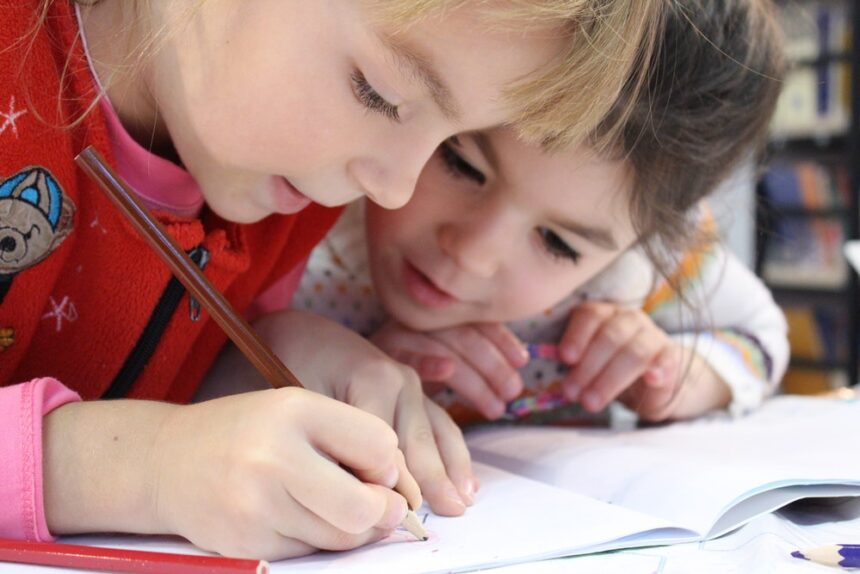Therapeutic activities provide several advantages to children with autism. Activities help children reduce harmful behaviors, establish friendships and personal skills, enhance physical and mental well-being, and discover new hobbies.
What Are Some of the Best Activities for Children with Autism?
You need to speak with a trained applied behavioral analyst to help your child deal with autism. Experts such as Abacus Therapies can help you understand the best types of therapies that can help them.
The following therapeutic activities help autistic kids to the core.
Pool Noodles
A basic form of pool noodles enhances a kid with autism to the core level. This form has many kinds of applications. This toy is simple and versatile.
Sensory bin
A sensory bin can be filled by a child with fascinating objects such as tissue paper, colored beads, ribbons, and so on. This activity helps your children’s tactile systems stay engaged, peaceful, and organized. Also, this task enhances finger dexterity as well as visual-motor abilities.
Safe Sensory Time-Out Space:
Building a specialized sensory room might not be viable in households with restricted space. You may, however, always construct a corner or area that serves as the child’s secure sensory refuge.
A tepee, hammock, hula hoop, seating area, or anything else that makes your youngster feel comfortable and calm. One may also arrange for songs to be played in this area if your youngster considers it relaxing.
Paper-pencil tasks:
Paper-pencil assignments are excellent for strengthening hand-eye coordination and visual processing abilities. For example, Maze novels, and word searches.
Visual timetables
Creating visual timetables can enhance your kid’s self-care tasks and independence functions. Detailed instruction and simple directions allow your kid to improve his observation skills according to your expectations. This activity helps kids learn what to expect.
Obstacle courses
To enhance his motor skills, your child can pretend to do animal duties such as walking. To enhance coordination and balance, your youngster can yell, stroll, or run like different animals.
Sensory or Calm-Down Bottles
Incorporating little, colorful trinkets into bottles may create an eye-catching aesthetic effect. A mix of water and hair gel, for example, produces a slow-motion effect as the child swirls the container.
Swimming lessons for children with ASD
Children with autism spectrum disorder can easily learn to swim. A certified professional assists a child with autism in learning to swim effectively. Swimming has several advantages for autistic youngsters.
Reducing stress and feeling light.
Autistic kids feel comfortable and delighted after water therapy. Swimming reduces the kids’ stress and makes them feel light. The kid feels relaxed in addition. Many children are able to handle contact better after water treatment.
Children find water therapy soothing and therapeutic. And it’s simply plain entertaining! Students perceive the challenges of learning new things and improving their swimming abilities. Some children like the competitive aspects of swimming and strive to enhance their speed and maneuverability.
Swimming lessons are vital for kids with autism spectrum disorder because they provide a peaceful and familiar atmosphere while also relaxing their minds.
For their autistic children, parents can select authentic or accredited swimming lessons.
Make puzzle books, word puzzles, and sight-sensing puzzles available.
Vision abilities are crucial in the development of an autistic youngster. Let us just make it a good time. Numerous enjoyable games are available on the internet, but focusing on paper and pencil exercises improves hand coordination and visual perception abilities.
The eyes learn to cooperate. Eye-searching and problem-solving abilities increase as well.
Sensory and calming bottles for sensory interactions
These exercises are relatively simple for children and aid in their development. Here are a few sensory exercises for autism.
A.Sensory Minion Bottle
This bottle is adorable and will keep your children entertained.
B. Game of Calming
Finding concealed stuff in these cool bottles excites kids.
C. Sensory Bottle with Rainbow Buttons
Have some fun with any type of button in an unusual way.
D.Glittery Calming Bottles
Containers filled with sparkly hues appear to be a terrific way to relax.
E.Sensory Bottles for Weather
Talk about various types of weather in a visually appealing way.
F.Sensory Color Mixing Bottles
Color blending is also a fun activity.
Incorporate Mind Breaks or Yoga Exercises
Difficult tasks and examinations necessitate a child’s mental commitment. You should make certain that your youngster enjoys a break in class.
Deep breathing and relaxing methods may therefore help your child in these types of tough situations. There are several brain break activities and deep breathing exercises available on the internet.
Outdoor and playground activities
Outdoors, an autistic youngster
Inquire as to why he does not enjoy the equipment or merely goes in loops all around the playground rather than utilizing it as intended. Provide enjoyable options like alphabet treasure hunts and the discovery of objects starting with each letter of the alphabet.
These types of games encourage youngsters to engage all of their senses at the same time. Allow your children to spend time outside in bare feet whenever feasible. When your child dislikes playground equipment, he may be communicating that he requires further therapy to address a phobia or motor deficiency.
Include your youngster in everyday decisions.
Understand that youngsters like participating and receiving parental permission. Even the simplest basic jobs may be enjoyable when done jointly. Make a weekly plan, for example. Examine recipes and the kitchen to see what goods should be included in the shopping list. Ask your kid about the meals he enjoys and have him gather the necessary ingredients and put them on the list.
It’s a wrap.
The therapy activities for children with autism listed above significantly improve children’s key living skills. Swimming, among other activities, improves self-help and school preparedness. Furthermore, the activities discourage troublesome behavior in children by enhancing their self-confidence.

